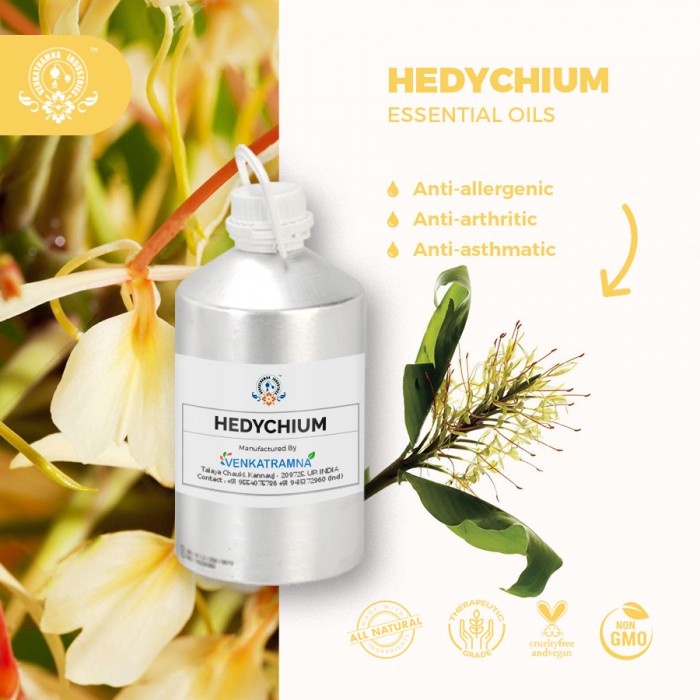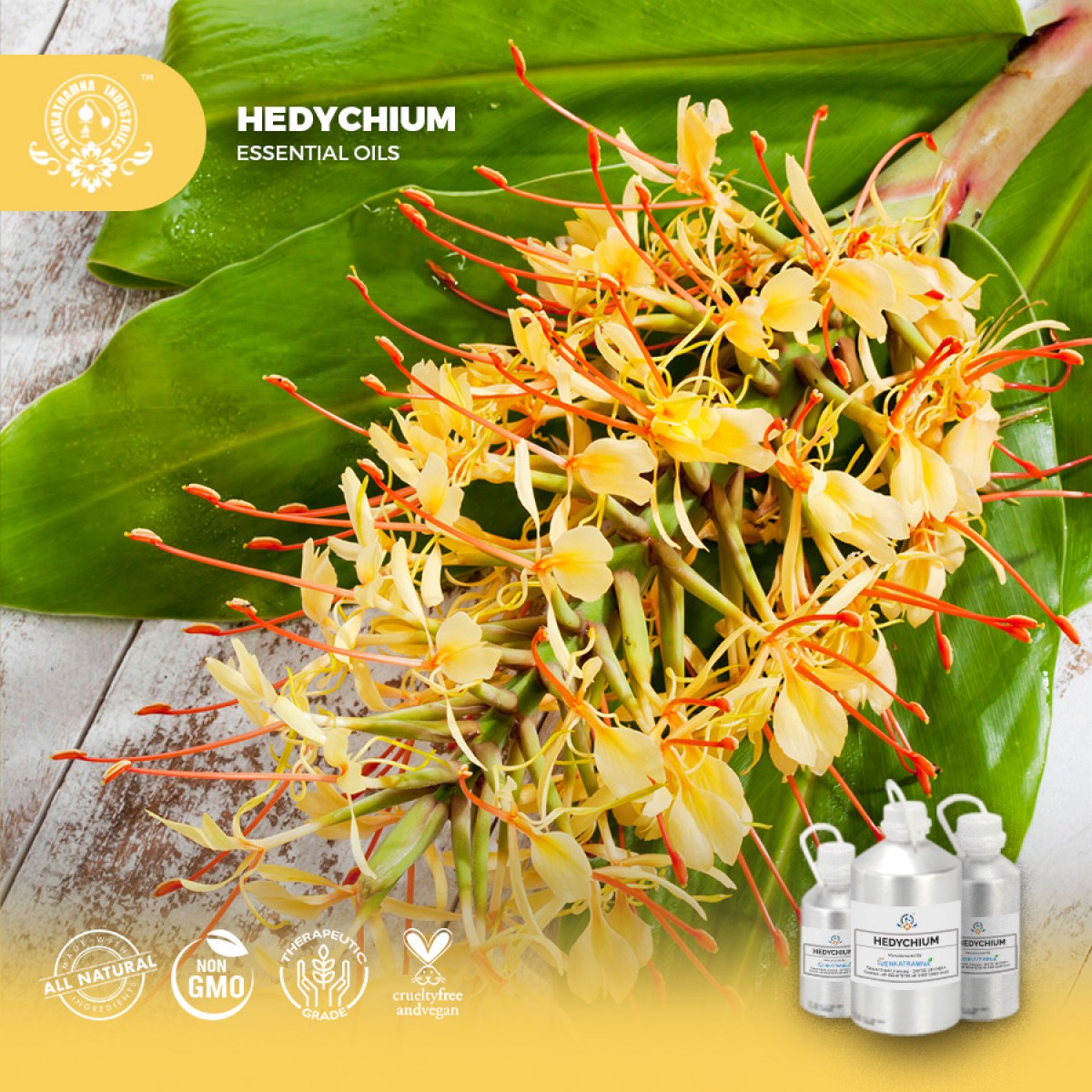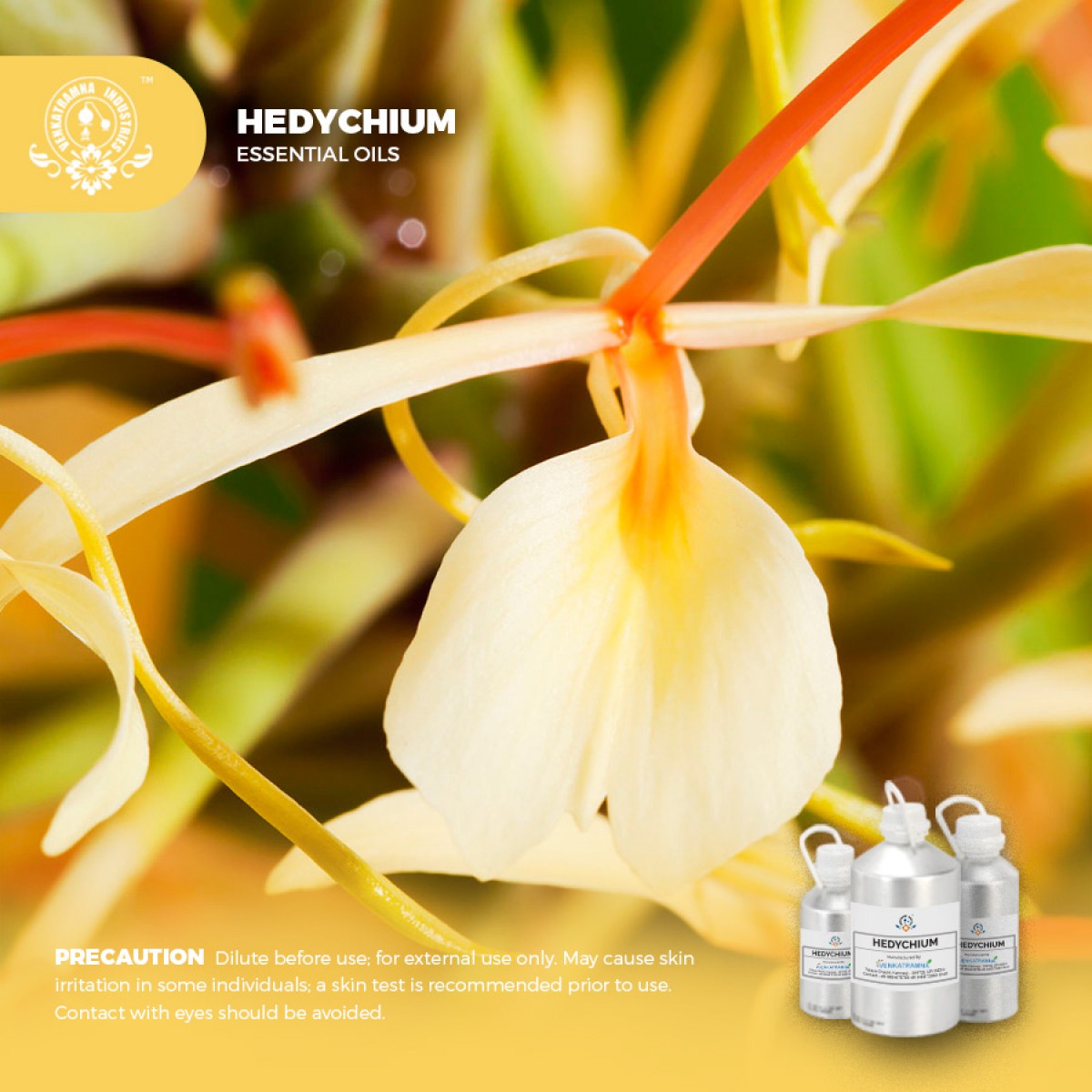Botanical Name: Hedychium spicatum Common name: Kapoor Kachri oil, ginger lily oil Read More
|
Botanical Name: |
Hedychium spicatum |
|
Common name: |
Kapoor Kachri oil,
ginger lily oil |
|
Plant family: |
Zingiberaceae |
|
Genus: |
Hedychium |
|
Appearance/Color: |
Pale yellow
liquid |
|
Odor: |
Medium strength aroma
with warm woody notes having a spice and soft floral touch |
|
Blends With: |
Goes well with
sandal wood, cassia and jasmine |
|
Origin: |
India |
|
Source: |
Rhizomes |
|
Method of
Extraction: |
Steam Distillation |
Hedychium spicatum is a perennial
hermaphrodite (has both male and female organs).
It is commonly called Kapoor Kachri plant in India. It is an annual herb having
horizontal root and tuberous root fibers. The flowers are attractive and have
ornamental applications in house hold. Flowers have good smell and are used in
bouquets and bridal wreaths.
The rootstock has a number of
medicinal properties and is used as a carminative, expectorant, stimulant. In
traditional medicine it is used to treat liver complaints, fevers, vomiting, diarrhea,
inflammation, pains and snake bite. It is used in the treatment of indigestion
and poor circulation due to thickening of the blood.
Hedychium essential oil is obtained by steam distillation of the root stock. And we offer a pure quality Hedychium essential oil that can be helpful to treat different ailments.
DISCLAIMER
The complete range of conditions
or methods of use are beyond our control therefore we do not assume any
responsibility and expressly disclaim any liability for any use of this
product. Information contained herein is believed to be true and accurate however,
all statements or suggestions are made without warranty, expressed or implied,
regarding accuracy of the information, the hazards connected with the use of
the material or the results to be obtained from the use thereof. Compliance
with all applicable federal, state, and local laws and local regulations
remains the responsibility of the user.
The FDA has not evaluated the
statements on this website. No claims are made by Venkatramna Industries as to
the medicinal value of any products from vriaroma.com or by us. The information
presented here is for educating our customers about the traditional uses of
essential oils and is not intended to diagnose, treat, cure, or prevent any
disease. You are responsible for understanding the safe application of these products.
If you have any questions, please call or email us for further information.
As per NAHA guidelines, New Directions Aromatics (NDA) does not recommend the ingestion of essential oils. It is imperative to consult a medical practitioner before using Essential Oils for therapeutic purposes. Pregnant and nursing women and those taking prescription drugs are especially advised not to use this product without the medical advice of a physician. The oil should always be stored in an area that is inaccessible to children, especially those under the age of 7.
Hedychium essential oil is
popular in perfumery industry strongly known for its characteristic woody,
spicy odour of its roots. Since ages it has been used in hair oil preparations
aimed especially at preventing baldness and hair fall. In traditional medicine,
it is used to counteract bad mouth odor.
Hedychium essential Oil in
Pharma
Hedychium essential oil is well
known for its anti-inflammatory, bactericidal, carminative and fungicidal
activities that are drawn from the original root stock from which Hedychium
essential oil is extracted.
The anti-bacterial and fungicidal
properties make Hedychium essential oil to treat local inflammations. The
carminative effect marks its use in treating hiccups, bronchitis. Hedychium
essential oil is a powerful anti-rheumatic agent.
Essence of Hedychium essential
Oil
Hedychium oil has various
chemical compounds. They have varied biological roles in treating different
skin and digestive ailments. The strong aroma cures people suffering from
nausea.
COMMON USAGE
·
Antibacterial, Antispasmodic
·
Anti-rheumatic
·
Anti-arthritic
·
Tonifying
·
Expectorant
·
Mucolytic
·
Digestive function
·
vasodilator
Ingredients:
|
S.No |
Key Constituents |
Strength (%) |
|
1 |
1,8- Cineol |
44.3 |
|
2 |
Linalool |
25.6 |
|
3 |
T-Muralool |
4.4 |
|
4 |
Hedycaryol |
2.6 |
|
5 |
?-cadinol |
2.3 |
|
6 |
?-edusmol |
2.3 |
|
7 |
?eudesmol |
2.2 |
|
8 |
Ascaridole and others |
1.3-15.6 |
TOXICOLOGICAL
INFORMATION
Safety Summary
·
Hazardous: may contain ascaridole. Essential
oils having 1,8- Cineol can cause problems in central nervous system and cause
breathing issues in children. Consult the physician before choosing.
·
Contraindications: Do not apply externally to
children.
·
Recommended maximum dermal use: 6.3%
·
Recommended maximum oral use: 180 mg
Organ Specific Effects
·
Adverse skin effects: No information
available
Systemic Effects
·
Acute Toxicity: Ascaridole is highly toxic. 1,8-
Cineol has been reported to be highly poisonous in children when accidentally
instilled into nose.
·
Germ cell mutagenicity: No data available
·
Carcinogenicity: No data available
·
Reproductive toxicity: No data available
ECOLOGICAL
INFORMATION
·
Acute aquatic toxicity: No data available
·
Mobility in soil: No data available
·
Bioaccumulation in ecosystem: No data available
·
Persistence and biodegradability: No data
available
·
Results of PBT and vPvB: No data available
·
Other notes: Do not allow undiluted oil into
water systems, sewages.





 MSDS-Hedychium.pdf
MSDS-Hedychium.pdf




